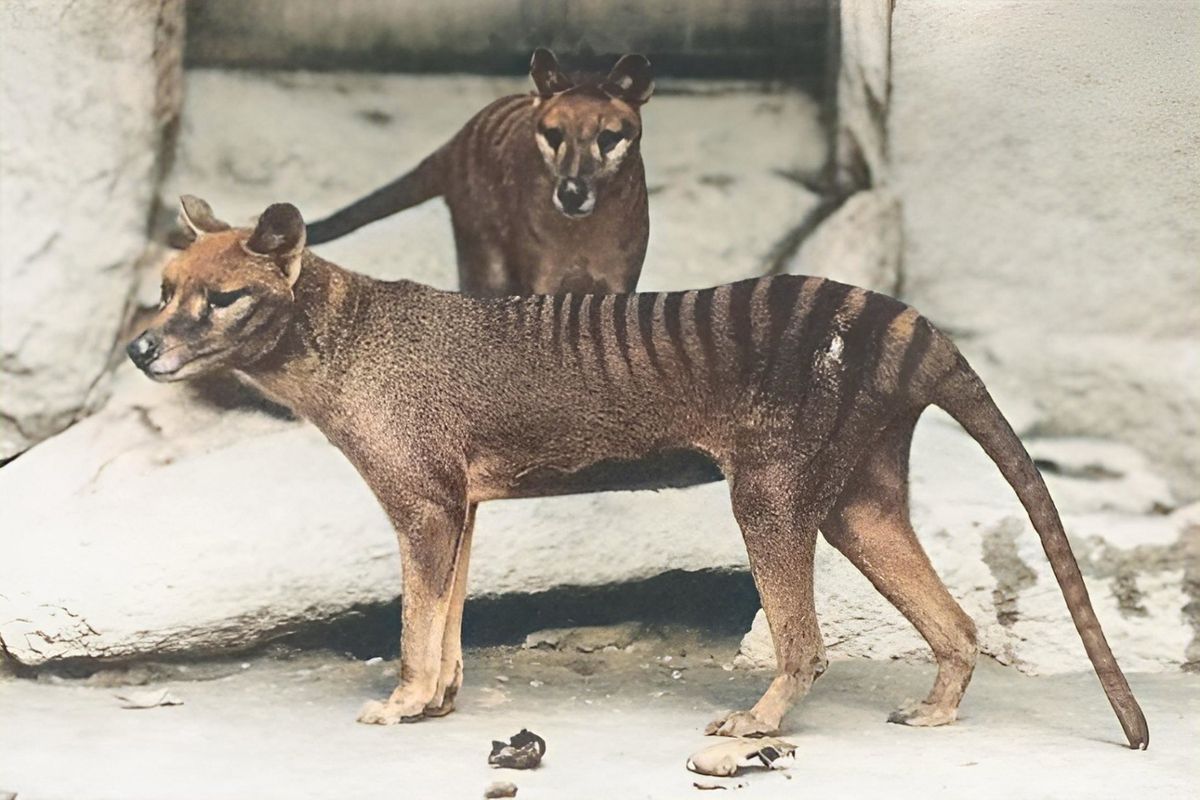Think back to high school biology course and you may remember the difference between DNA and RNA. DNA works as the long-term storage of a cell’s function, while RNA translates DNA into proteins that keep cells focused on their tasks. When it comes to researching extinct animals the focus has almost entirely been on DNA because it tends to stand the test of time better, but RNA is the real secret to understanding how animal’s cells functioned.
Enter the Tasmanian tiger, more properly called the thylacine, which was a marsupial resembling a mid-sized dog with striking stripes on its back. European colonizers in Tasmania regarded them as pests because they would attack their burgeoning sheep farms on the island. In fact, the Australian government funded hunting them until the last thylacine died in captivity in 1936. However, researchers performed a biopsy of a 130-year-old museum specimen from the Stockholm Natural History Museum and recovered samples of skeletal muscle and skin tissue. They were able to unwind the individual RNA strands preserved through time, and decode what their function would have been. Years of natural exposure and human handling, however, can lead to contamination, so researchers ran the RNA sequences through a computer algorithm to isolate the thylacine RNAs from others. Moreover, their analyses discerned differences between RNA in the skin and that in the muscle, a normal occurrence, but one that allows scientists to better study how thylacine biology functioned. Ultimately, such a discovery means that troves of museum samples may hold the key to better understanding extinct animals.










